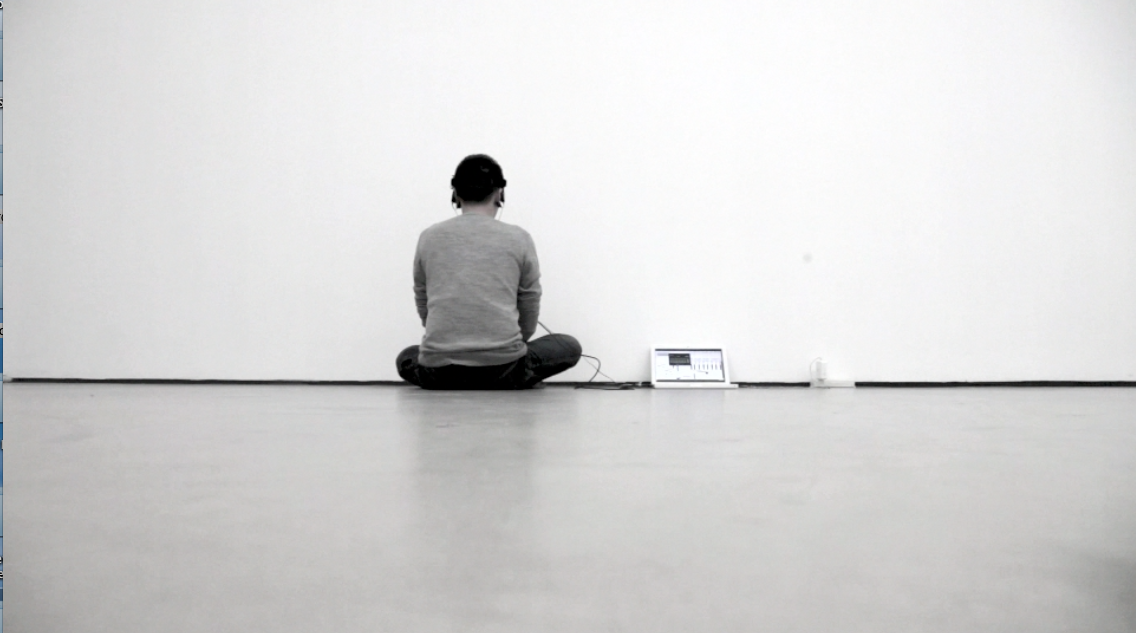
Signal Path II: Sinister Resonance(2011)
楊嘉輝
聲音裝置
楊嘉輝在不同的裝置現場(即展覽場所的附近/外面)透過身上穿戴的感應器冥想。這個感應器可以把他的腦波轉換成聲音。當藝術家在嘗試要集中注意力時,感應器操控著八組感應腦波的訊號。每一個訊號會產生頻率波或是方形波。每一個聲調具有特定的音域範圍。當注意力的程度超過某一個界線時,聲調將被重新分配概約至泛音音列,產生肥厚的、協調的聲面。矛盾的是,當藝術家意識到這一系列的聲調時,他的注意力會被分散。而經常的「注意力分散」建構成訊號一再往復的反饋迴路,即是聽覺感知的阻饒。
冥想中的聲音會被紀錄和透過小型的播放器播放,而這個播放器會被安裝在他曾經進行冥想的地點。
Signal Path II: Sinister Resonance(2011)
Samson Young
documentation of a series of site-specific performances
Samson Young meditated at various locations within/around/outside of the installation site while wearing a sensor that turns his brainwaves into sound. Sensors monitor eight sets of electroencephalographic signals while he attempts to focus his attention. Each signal generates one sinetone or squarewave. Each tone occupies a specific frequency range.
When attention level is above a certain threshold, tones will be redistributed to approximate the harmonic series, producing a "fat," "harmonious" sound field. Paradoxically, as soon as Young became aware of the alignment of tones, he is distracted. This constant focus-distraction constitutes a perpetual signal feedback loop that "short-circuits" the sense of hearing.
The sound of his meditation was recorded and played back via small media players, which were installed at the same spots where he meditated.
